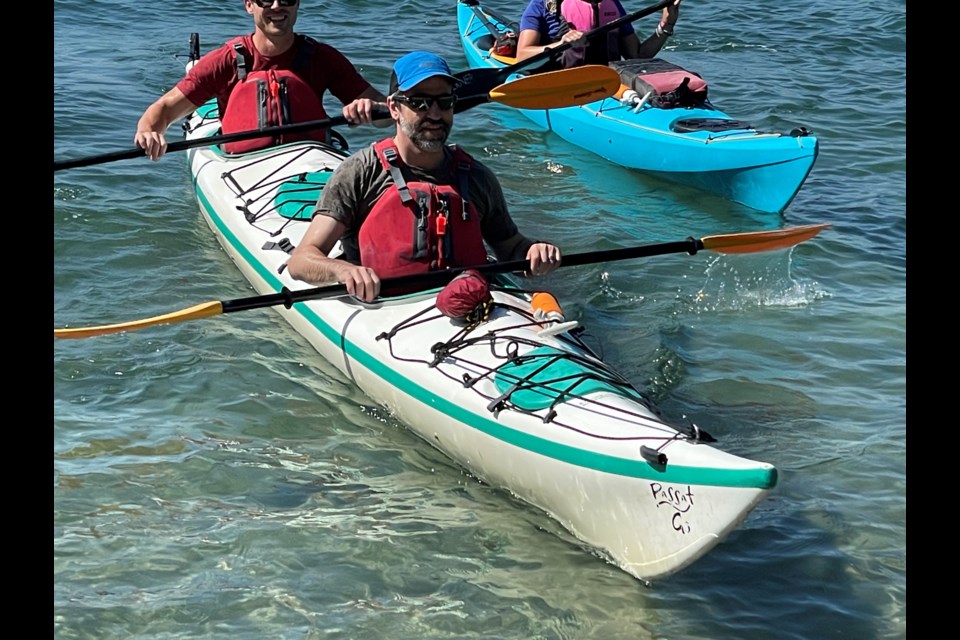The federal government has announced funding of $926,000 over four years to boost environmental protection in B.C.’s Howe Sound area.
Steven Guilbeault, minister of environment and climate change, made the announcement Thursday morning at a park in Lions Bay on the edge of Howe Sound, along with West Vancouver-Sunshine Coast-Sea to Sky area MP Patrick Weiler, environmental advocates and local government leaders.
The funding, from the federal Enhanced Nature Legacy program, will go to support conservation efforts in the Atl’ka7tsem Howe Sound Biosphere Region, which was given a UNESCO designation as an environmentally sensitive area of global ecological significance in 2021.
Funds aimed at protecting biodiversity
The federal money will support projects to identify and prioritize areas with high biodiversity for protection, and support projects within those target areas for habitat restoration and monitoring species at risk, according to the ministry.
The goal is to include more protected areas within Howe Sound’s biosphere region towards the federal goal of protecting 25 per cent of land and water in Canada by 2025, and 30 per cent by 2030, said Guilbeault on Thursday.
“For many Canadians, especially in cities, nature sometimes seems disconnected from their daily lives. That's where biosphere reserves are making a real difference,” said Guilbeault.
Ruth Simons, executive director of the Howe Sound Biosphere Region, said biosphere programs are about connecting people to environmentally significant features of the land and water, and carrying out monitoring and research projects.
There are at least 39 species at risk within the Howe Sound biosphere, with biodiversity and habitat loss at the heart of the issue, said Simons.
Among those being examined as priorities for conservation efforts are Howe Sound’s ancient glass sponge reefs, orca whales, coastal tailed frogs, marbled murrelets, and rockfish, said Simons.
Wildlife connectivity corridors in the Squamish area are also a concern she said.
She said the key to environmental conservation will be to include the information discovered in the biosphere monitoring and research in decision-making by government.
Human activities biggest threat to Howe Sound
Human activity in the sound – both by industry and increased recreational activities – remains the biggest threat to threatened species, she added.
Sḵwx̱wú7mesh Úxwumixw (Squamish Nation) councillor Joyce Williams, co-chair of the Howe Sound biosphere, described the federal government’s funding announcement as “a really good first step.”
Many different levels of government and Canadian law influence how the biosphere is looked after, said Williams. “This has resulted in many gaps that must be filled.”
The Atl’kat7sem Marine Stewardship Initiative is one of the many non-governmental organizations that work with the biosphere group towards conservation goals, by mapping various uses and environmental features of Howe Sound.
Much still to learn about ancient glass sponge reefs
There’s also much still to discover about the ancient glass sponge reefs in Howe Sound, said Adam Taylor, director of the Marine Sanctuaries Society of B.C., including their ecological role in filtering water in the marine environment.
But Taylor said the glass sponge reefs remain threatened by both lack of knowledge about fishing restrictions and lack of enforcement of those rules.
Simons added a biosphere designation doesn’t come with any additional government rules or regulations of activities in the region. While there are already a lot of regulations in place to protect the environment, “we need to be diligent in making sure these are upheld,” she said.
The federal funding comes with a stipulation that the biosphere group matches the funding by the end of the four-year period. But Guilbeault stressed Ottawa is not making the organization come up with matching funds before getting the federal money. “It’s a leap of faith,” he said.




